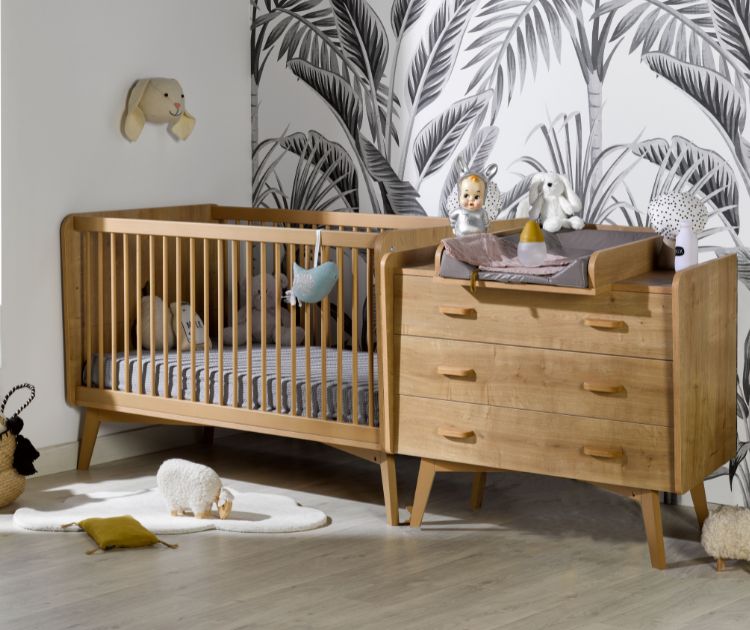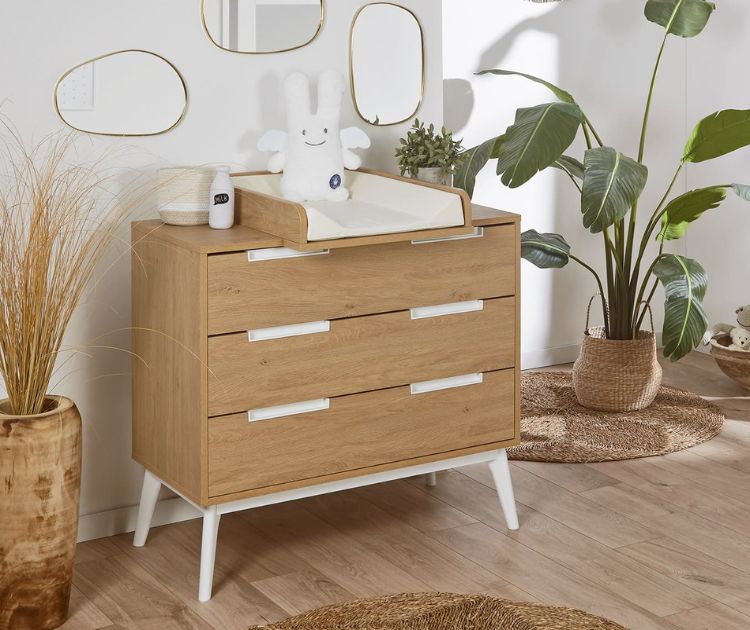How to organize a typical day for baby?

Make your daily life easier with a typical day for baby
With baby's arrival, the entire household rhythm is completely turned upside down. At first, parents follow the newborn's rhythm, but around 6 months, things start to become more routine, making it easier to organize the days. Here's how to organize a typical day for baby (keeping in mind that each child has different needs), and what tips to know to make daily life easier.
A baby's typical morning
Babies are often early risers, so expect wake-up time to be around 7 AM.
First morning routines
Some babies are hungry right away, and others need a little time, but in any case, the day often starts with cuddles, a diaper change, and nursing or a bottle.
Playtime
Then comes the time dedicated to developmental activities. You can offer baby playtime on an activity mat, discover different sensory games, or sing songs. Try to vary activities from day to day to allow them to develop and discover different things.
Nap time
Around 9 o'clock, baby often starts to get tired, you can comfortably place them in their baby bed for example, for a nap that can last up to 1.5 hours. You can use this time to prepare lunch.
Walk
After the nap, you can take advantage of the time to go for a short walk so baby can get some fresh air. If possible, choose a natural setting like a countryside path or park so baby can enjoy the most pleasant and stimulating environment possible.
Lunch
Then comes mealtime. From 4 months, food diversification begins. You can offer vegetable puree and fruit compote for dessert. Adapt the menu and volume according to your baby's age and needs.
Nap time
After the meal, you can enjoy some quiet time followed by a nap of about 2 hours.
Baby's typical afternoon
After the nap, it's time for baby to resume activities.
Playtime
After their nap, baby can start their afternoon with playtime. Here too, you can offer developmental games, interact with baby, listen to music, etc.
Snack time
The day continues with snack time. This can be nursing or a bottle, but also fruit compote if your baby is used to solid snacks.
Nap time
Around 5:30 PM, baby might need some rest again, so it's not uncommon for a short nap of less than an hour to take place at this time.
Baby's typical evening
The last steps of baby's day will help them calm down for a perfectly restful night.
Bath time
Baby's evening starts with bath time. It's a relaxing moment that also allows baby to have fun in the bath. If baby particularly enjoys bath time, you can offer it every day; otherwise, every other day is sufficient for the little ones.
Mealtime
The last meal of the day can be a bottle or solid food depending on baby's rhythm and needs. Sometimes this last bottle of the day is supplemented with cereal to avoid night wakings.
Bedtime
Finally comes bedtime routine around 8 PM. You can sing a lullaby or tell a story, give a big hug and put baby in bed. If possible, teach them to fall asleep on their own so they become autonomous in managing their sleep.
Some tips to make daily life easier
For baby's typical day to run as smoothly as possible, certain arrangements need to be made in the house.

Choose a suitable baby bed
Choosing the baby bed is very important for your child to be comfortably installed. You can for example opt for a convertible baby bed that can be used from 6 months to 6 years. The 0-6 years convertible baby bed will indeed transform as baby grows. Your convertible baby bed allows you to invest in comfortable and lasting sleeping furniture. You can for example choose the vintage look of our Icone baby bed.
Equip your home to take care of baby
More than just the baby bed, it's your entire living space that needs to adapt to baby's presence. For example, you can opt for a complete baby room to benefit from suitable baby furniture like a dresser and a wardrobe.
Having a changing table is a real plus that can make all the difference. If you don't have space to install one, you can certainly opt for a removable changing top to place on baby's dresser.
Among the mistakes to avoid when setting up baby's room, note that the play area will often be better placed in the living room. Indeed, baby will be closer to you during playtime. For practicality, this is why a playpen or play mat is most often set up in the living room.

Remember that each child is unique
We detailed above the typical day of a 6-month-old baby, but remember that each child is unique and has their own needs. This schedule should therefore be adapted according to your child, and also the recommendations of healthcare professionals who monitor their development.













 Choosing the right baby blanket dimensions according to season and age
Choosing the right baby blanket dimensions according to season and age
 How to attach a headboard (with or without drilling): quick and effective soluti
How to attach a headboard (with or without drilling): quick and effective soluti
 Waterproof sheet or mattress protector: the best solution by age group
Waterproof sheet or mattress protector: the best solution by age group
 27 Original, Useful, and Trendy Christmas Ideas for Teens 2025
27 Original, Useful, and Trendy Christmas Ideas for Teens 2025
 Christmas Activities for Baby: Creative Ideas for Home & Daycare
Christmas Activities for Baby: Creative Ideas for Home & Daycare